Key takeaways
- Cross-selling and upselling are sales tactics
- They seek to increase revenue but do so in different manners
- Cross-selling bundles complementary products together to increase the volume of sales
- Upselling offers a superior product of the same nature for a higher price
- Deciding whether to cross-sell vs. upsell will depend on your product/service
The cross-sell vs. upsell debate is a long and complicated one. Not to mention, the two selling strategies are similar enough that people often use them interchangeably despite key differences.
With that said, both are time-tested sales strategies that aim to increase revenue in one way or another. They’re not suitable for every business, though, so it’s important to figure out which one will work for you. And that, of course, raises some questions. What is cross-selling? What about upselling? How do they increase revenue? How do you decide to cross-sell vs. upsell? Can you use both at the same time?
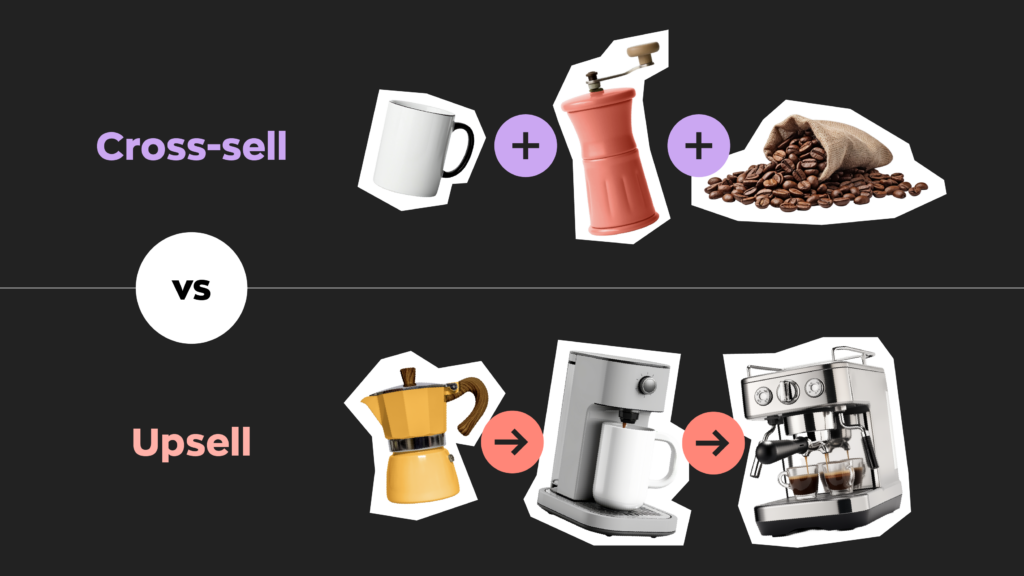
There’s a lot to go over today, so let’s dig in!
What is cross-selling?
Cross-selling is a sales strategy that involves selling supplementary products alongside the main product.
If you’ve ever seen Amazon merchants bundle items together, that’s an example of cross-selling. They’re bundling together items that are often sold together in hopes of increasing their sales. Cross-selling is not limited to just products, either. Service providers can do the same. For example, a mechanic primarily offering oil changes will likely provide a tire change service.
Generally speaking, cross-selling is one of the main ways that a business increases its customer lifetime value (CLV). It also helps a business diversify its product lineup, which lowers dependency on specific products. Cross-selling isn’t as simple as it seems, though. If done incorrectly, it can discourage your customers and drive them toward competitors.
At the end of the day, if you’re cross-selling, the products need to supplement one another. Sometimes, it can require some serious data analytics, but a lot of it just requires some common sense.
Implementing cross-selling is simple in nature. Identify related products that are ideal for cross-selling. Many companies take this a step further by analyzing customer data and tailoring campaigns to appeal to certain groups. An easy way to track this data yourself is by itemizing invoices to see what customers are purchasing together.
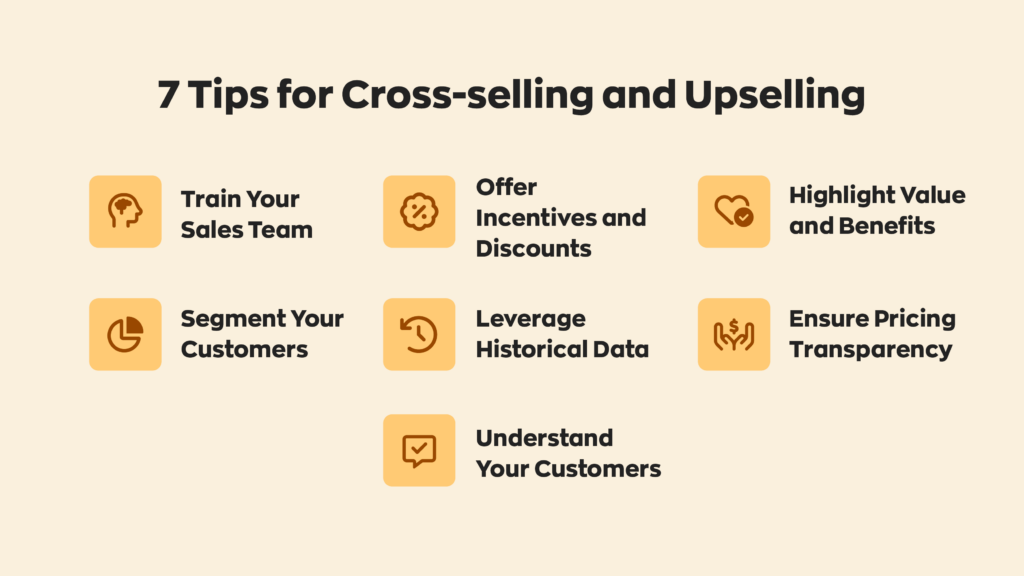
What is upselling?
While they share similar names and goals, upselling seeks to increase company revenue in a different manner. Instead of selling complementary products or services, upselling involves selling a similar, but more expensive product. That might not make much sense. Why would a customer buy a more expensive product if a cheaper one is available? There are a few reasons.
At the end of the day, as consumers, we buy a product or service to solve an issue. This includes the clothes on our backs and our homes: each serves a distinct, necessary purpose in our daily lives. But even if multiple products solve the same problem, one solution could be more efficient, one could be more durable, another have more features, and so on.
The bottom line is that consumers are often willing to pay more for a good reason. For example, someone whose job involves a lot of typing is likely willing to pay more for a higher-quality keyboard. They may also pay more for an ergonomic design.
At the same time, the keyword here is good. Customers need a good reason to buy into an upsell strategy. If it’s something superficial, it could have the opposite effect, and push them towards purchasing a more inexpensive item.
Apple is actually a really good example of upselling. iPads are popular devices across many different fields for a variety of reasons. They’re fast and can complete tasks ranging from coding to graphic design. There’s just one catch: users can’t expand the internal storage.
As a result, Apple sells models with different storage amounts. More storage means a higher selling price. The other iPad variants are also priced to walk consumers up the “price ladder” strategically.
Cross-sell vs. upsell: which is right for you?
Not every product or service can take advantage of these sales tactics– but most can. A good rule of thumb is to think of it like this. The goal of cross-selling is to increase the quantity of sales. The goal of upselling is to increase the value of each sale.
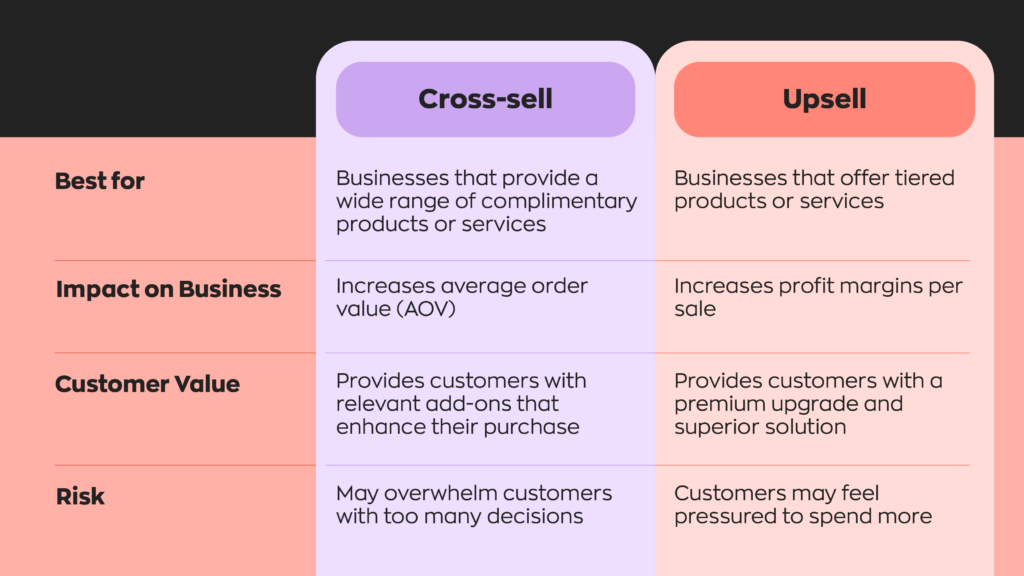
With that in mind, it’s also important to consider the nature of the product or service. For instance, let’s say you sell cell phone cases. A segment of your customer base is super active and tends to damage their cell phones more than most people. You could easily upsell these customers a more expensive phone case that is both durable and water proof. They save money in the long run, in exchange for paying a little more upfront.
Even if you provide a service, there are opportunities to upsell and cross-sell. HVAC technicians can encourage the purchase of a more efficient AC unit with a higher price tag (and profit margin). Plumbers can encourage snaking all the drains in the house for a slight discount rather than just the kitchen sink. The possibilities are endless.
Are there downsides to cross-selling and upselling?
Of course, there are downsides to these sales strategies. Some are only present when poorly implemented, but others can be unavoidable. For the most part, cross-selling has the potential to annoy customers. There needs to be a connection between the involved products. If not, customers won’t buy them.
As we mentioned before, it’s essential to do your due diligence before trying to cross-sell products together. Take a good look at your historical sales records. Have customers consistently bought these products together? If you then there’s a good chance they’ll be great candidates for cross-selling.
As for upselling, there tends to be an upper limit. At a certain point, the diminishing returns keep customers from buying a premium product. In some cases, upselling can also encourage impulse buying. This, in turn, can increase the number of returns. Depending on your store’s return policy, this could end up being really costly.
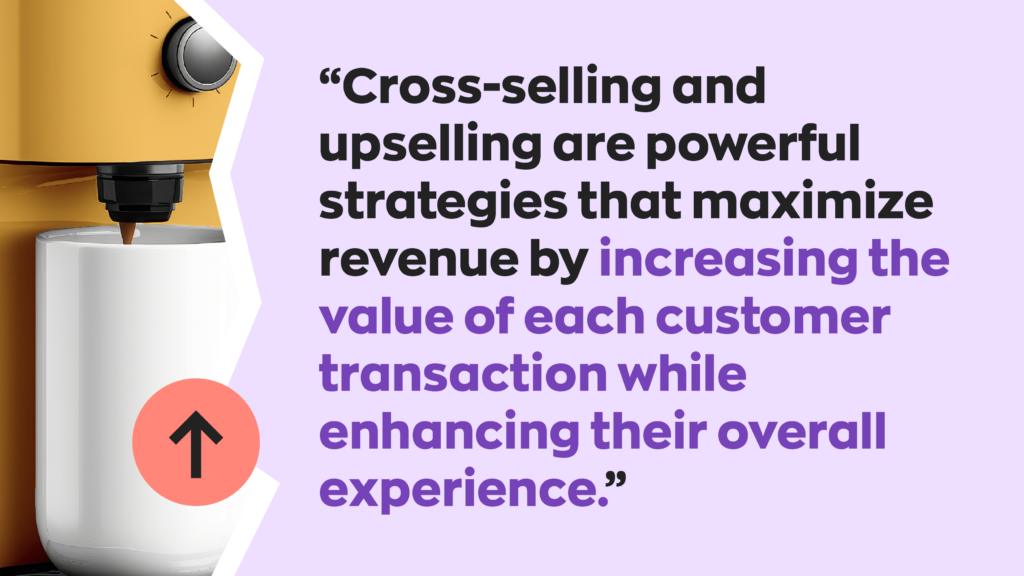
Many retailers already offer free shipping in an attempt to attract customers. That already eats into profit margins, and returns further diminish those margins. It’s also expensive in general. From 2011-2023, Amazon spent 89.5 billion on shipping. That’s an astronomical amount of money.
Brick-and-mortar stores experience this as well. Returns are not a zero-cost event: it requires an employee’s time to restock it, and potentially the operation of equipment. So be sure that the products that you upsell are providing additional value for your customers.
Wrapping up
Deciding between cross-sell vs. upsell depends on a number of factors. It depends on your market, your customer relationships, and other key competitors in the same space. As with anything, finding the right balance is crucial. Building and maintaining customer relations is an important part of any business, and poorly implemented tactics can damage that relationship.


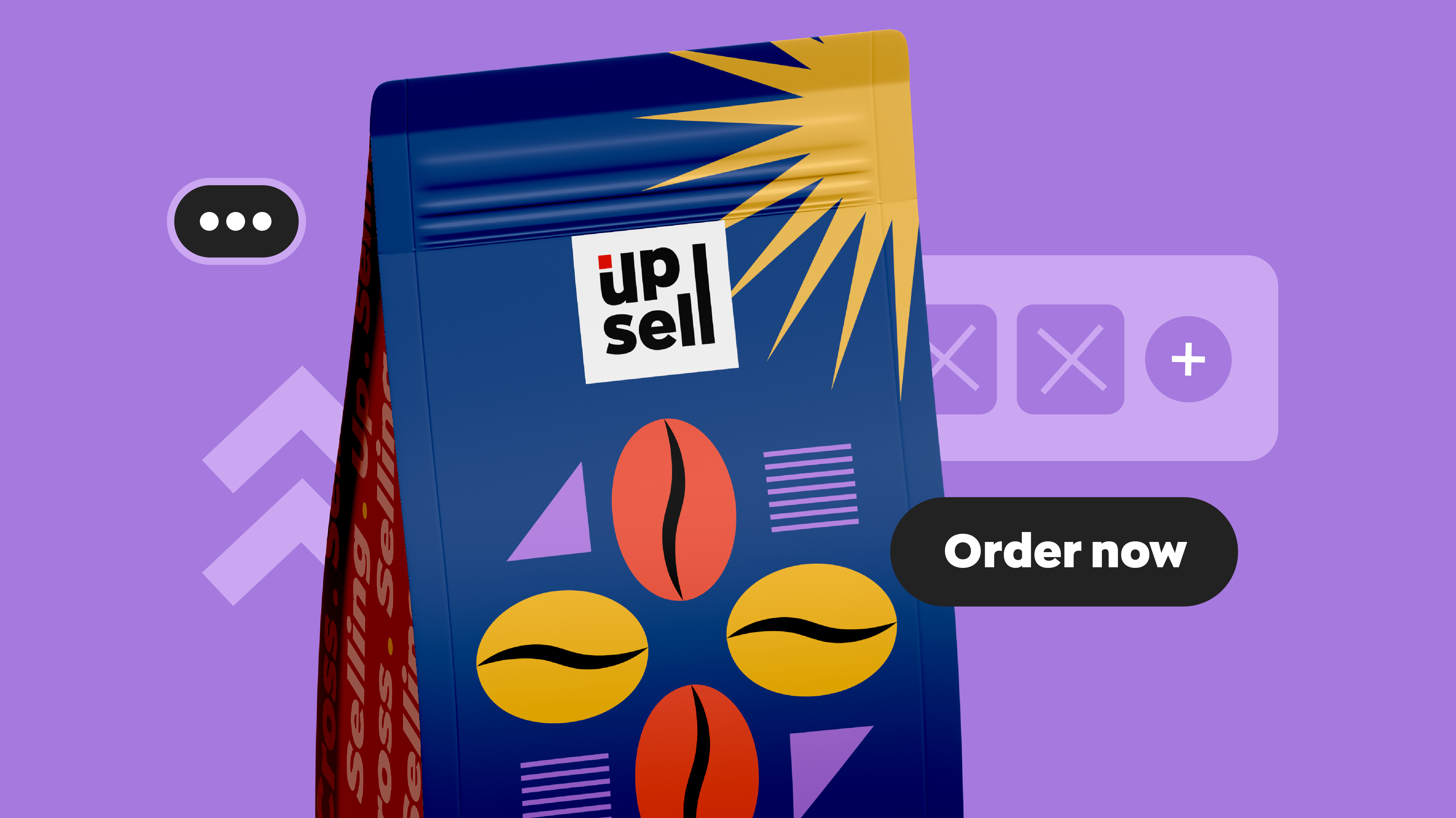

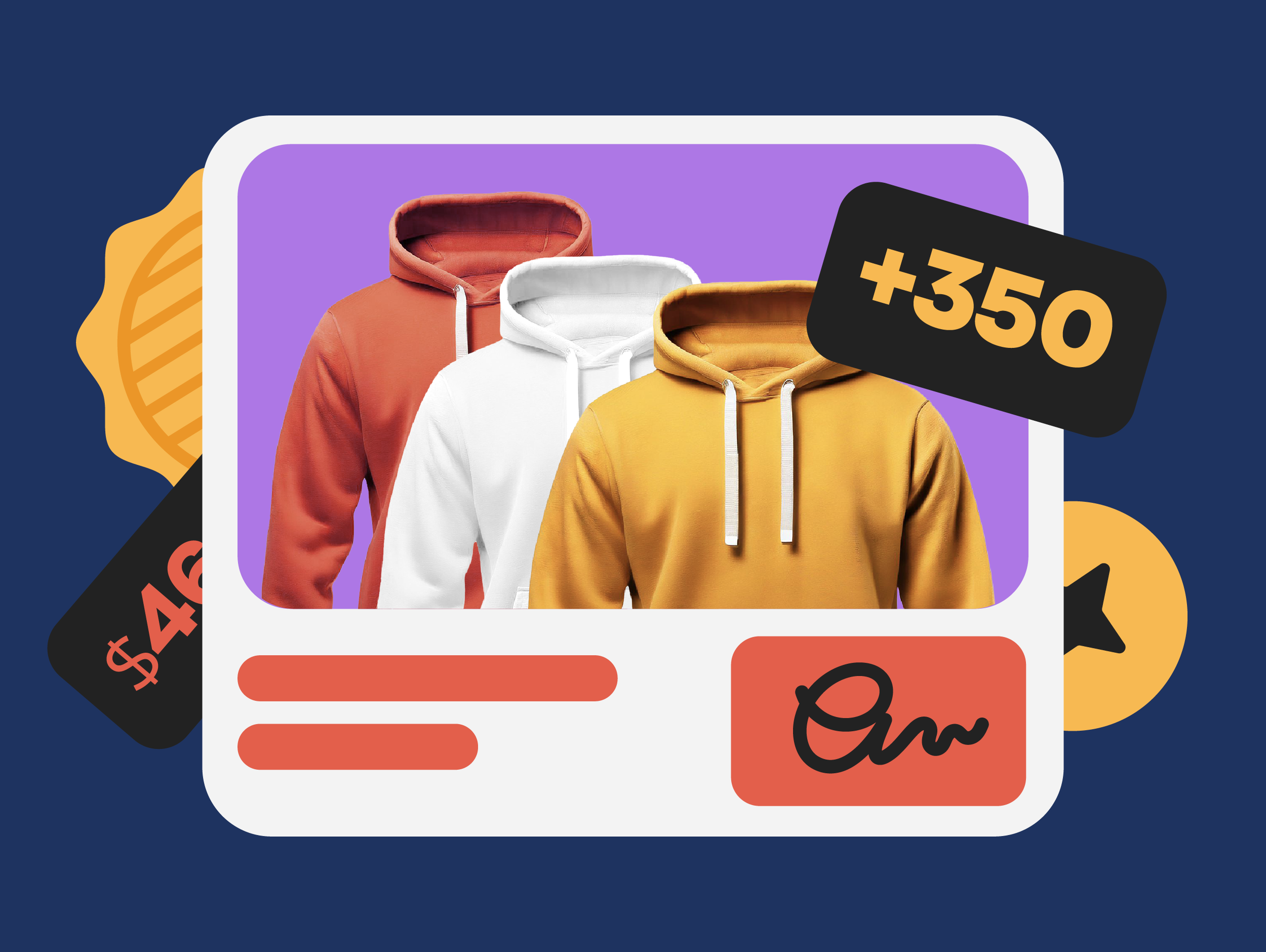

0 Comments